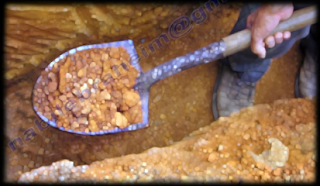A clay shoveler’s fracture is a stable fracture through the
spinous process of the vertebra C6-T1 and typically occurs at the level of C6
or C7. Clay shoveler’s fracture gets its name from the common injury suffered
by men diffing deep ditches in Australia during the 1930s.
Powerful
hyperflexion of the neck combined with contraction of the paraspinous muscles
during shoveling is the typical mechanism of injury. The tremendous force pulls
on the spinous process, producing an avulsion fracture.
The fracture is best seen on a lateral view x-ray. There
will be a ghost sign on AP view x-rays—double spinal process of C6 or C7,
resulting from a displaced fractured spinous process.
Stable fractures can be treated nonoperatively, utilizing a
collar and physical therapy.



